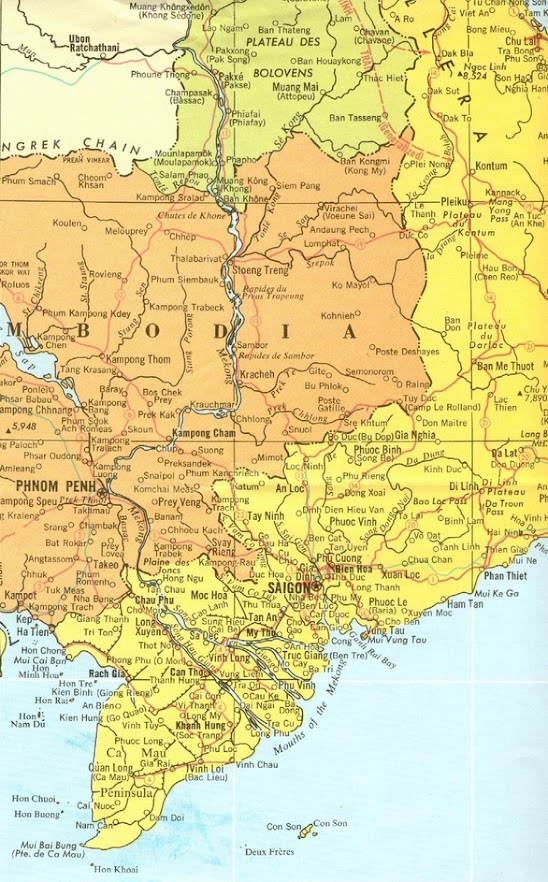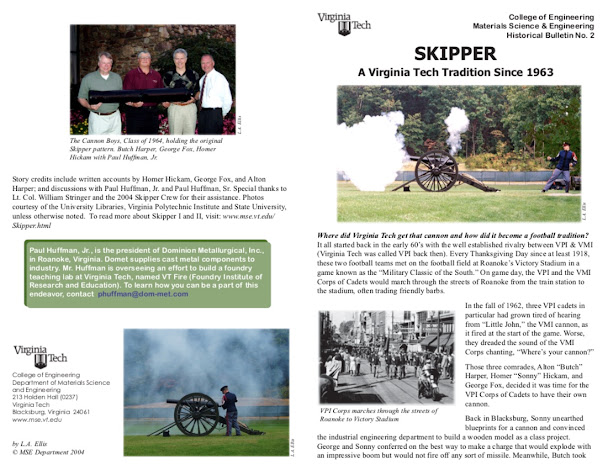Now that my memoir Don't Blow Yourself Up: The Further Adventures and Travails of the Rocket Boy of October Sky has been published, I've gotten a number of requests or wishes that there would have been more photos, maps, etc. so that some of the events and places might be better understood and enjoyed.
Since I like to please my readers, I am happy to comply with at least a blog that will help illustrate the memoir. This is being done quickly so please forgive the quality of the photos. Let's start at the beginning of the memoir and that's Part 1, Everybody's Favorite Cadet.
 |
Part 1 of DBYU
|
This part covers my college years and especially the building of the
famous iconic cannon Skipper. Sadly, when I began to research the memoir, it quickly became evident that
there is little photographic evidence of the old girl but I'll do what I
can.
One question that has arisen is why did I go to Virginia Tech (often called VPI in those days) and not West Virginia University? Mostly, it was because that's where my mother wanted me to go. This was because (1) my brother was already there on a football scholarship and it was simpler for her to keep track of her boys if they were both at the same place, (2) VPI had a really good engineering school, and (3) Blacksburg was a lot closer to Coalwood than Morgantown. Although I don't have maps of that era, here are a couple from today that still illustrates that situation:
 |
| Coalwood to Blacksburg |
|
|
|
 |
Coalwood to Morgantown
|
In 1960, the trip from Coalwood to Morgantown was even longer, often involving an overnight. There were no Interstates back then!
VPI was then almost exclusively a men's military college and most students were in its Cadet Corps (unless you were a veteran or, like my brother Jim, could opt out because he was a scholarship athlete).
The first year at VPI, I was one of hundreds of freshmen or, as they were called, Rats. We underwent some harsh discipline which, along with the tough academics, weeded out a lot of us.
 |
| Photo taken from the 1963 VT Yearbook Bugle |
|
|
However, after a rough start which included getting more demerits than any cadet in my class, I began to fit in well and actually started to like it, enough that I became the self-proclaimed Everybody's Favorite Cadet.
 |
| Virginia Tech Corps of Cadets formation, 1962 |
|
|
|
 |
| Cadet Hickam, Sophomore year |
|
I saw little of my brother during our years there but I was still proud of his first-string status on the football team.
 |
Brother Jim at VTech
|
I was a member of Squadron A, class of '64, and we became as close as brothers. Even today, we still are. Here is a photo of us at that time.
 |
| That's me upper right with George Fox (fellow cannon builder) causing trouble as always. |
|
|
|
One of the big events for our Corps was the annual Thanksgiving game against the Virginia Military Institute (VMI) It was called the Military Classic of the South and was a very big deal.
 |
A Squadron marching through Roanoke for the big game
|
VMI had a small game cannon they called Little John. They would fire it and then chant "Where's your cannon?" We didn't like that much so three of us decided to do something about it. Ultimately, even though we had no support from the University at all, and were often actively opposed by the Administration, Butch (Ben) Harper, George Fox, and I conceived, designed, and built our own cannon. We named it Skipper after our assassinated young President JFK, skipper of a PT-boat during WWII.
 |
The only known photo (copied from The Roanoke Times) of Skipper the day of the big game in 1963. That's me with my back turned, probably because we were still unauthorized.
|
Skipper was a huge success. We fired it and chanted "Here's our cannon!"
 |
| Cadet 1st Lieutenant "Flash" Hickam, Senior Year |
|
Here's some more information and photos of the Skipper story
Skipper has gone on to become an icon at Virginia Tech. Butch, George (now deceased), and I have returned many times to celebrate it with today's marvelous young cadets. There's even a special Skipper crew now, designated by the red stripes on their pants. Butch and I returned on Veteran's Day, 2021, to celebrate our old Skipper and the new one that still roars at games and special events on the Virginia Tech campus.
 |
Butch Harper and I with the original Skipper and the Skipper crew
|
 |
Me with the present-day Skipper and its crew in May, 2021. I donated my sabre (it has my name inscribed on it) to the crew and it is carried by its commander.
|
To order my new memoir, please go here and click on the appropriate link! www.homerhickam.com



























